Payments apps are all the rage.
Generating billions in revenue in the market, payment app development have attracted businesses and startups from across the world to build their own solutions.
Now, it’s easy to create a payment app, the hard part is finding the users.
So, what’s the problem with user retention in payment apps and how do you do it? These plus all other questions related to customer retention, are here.
But before that, let’s first understand what does “User Retention” means for payment platforms.
Understanding User Retention in Payment Apps
User retention in payment apps refers to the ability of a digital payment service to keep its users engaged and active over time.
Retention is a critical metric because acquiring a new user is often more costly and challenging than retaining an existing one.
In the context of payment apps, user retention is not just about preventing users from uninstalling the app or stopping its use, but also about ensuring they continue to engage with the app for making transactions, exploring new features, and more.
The significance of user retention in payment apps is twofold.
Firstly, a high retention rate indicates a satisfied and loyal user base, which can lead to increased transaction volumes and, by extension, revenue.
Secondly, retained users are more likely to recommend the app to others, thereby acting as organic ambassadors for the service.
That’s what user retention means. And with this out of the way, let’s move to the user retention pillar.
Pillars of User Retention
To effectively retain users in payment apps, it’s crucial to build on a solid foundation of core principles or pillars.
And this start way back in the fintech app development process.
These pillars form the bedrock of any successful user retention strategy and are essential for fostering long-term user engagement and loyalty.
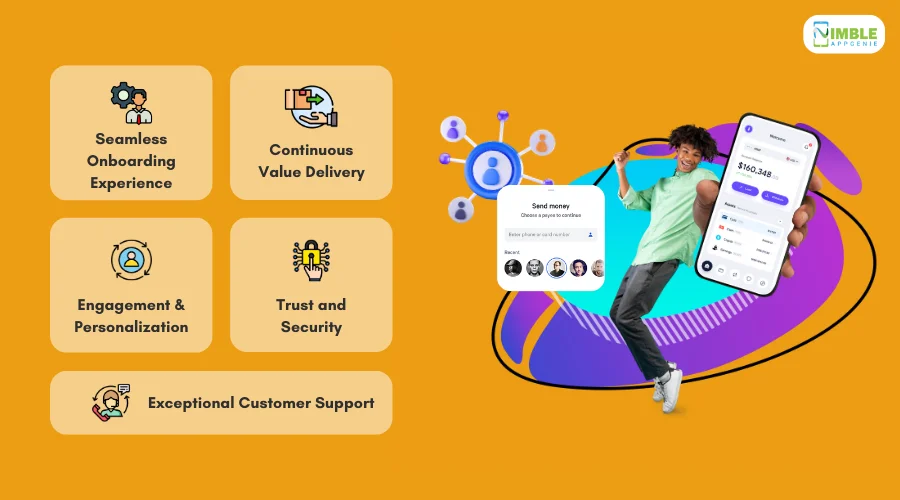
Let’s explore these foundational elements:
1. Seamless Onboarding Experience
The user’s journey begins with onboarding, and first impressions matter significantly.
A smooth, intuitive onboarding process can set a positive tone for the user’s overall experience. Essential aspects include:
- Simplicity: Avoid overwhelming users with too much information or too many steps at the outset.
- Education: Clearly explain how to use the app’s key features, perhaps through quick tutorials or tooltips.
- Personalization: Early personalization can enhance the user experience. For example, setting preferences during onboarding can make the app feel more tailored to the individual user.
2. Continuous Value Delivery
Second on the list is continuous value delivery. For users to continue engaging with a payment app, they need to perceive ongoing value.
This can come from various sources:
- Core Features: The fundamental features of the app, like making payments or transferring funds, must work flawlessly and efficiently.
- Added Value: Beyond basic functionalities, offering additional features such as spending analytics, savings goals, or rewards can keep users engaged.
- Updates and Innovations: Regularly updating the app with new features or improvements based on user feedback and market trends can reinvigorate user interest and engagement.
3. Engagement and Personalization
Engaging users in a meaningful, personalized manner can significantly boost retention.
Here, the payment app’s user retention strategies might include:
- Customized Notifications: Sending relevant alerts, reminders, or offers based on user behavior and preferences.
- User Segmentation: Tailoring experiences and communications to different user segments based on their activity, preferences, or demographic information.
- Engagement Campaigns: Run time-sensitive promotions, challenges, or educational content to keep the app top-of-mind.
4. Trust and Security
In the fintech space, trust is paramount.
Users need to feel confident that their financial data is secure and their transactions are safe.
- Transparent Security Measures: Clearly communicate the security features in place, such as encryption, two-factor authentication, or fraud monitoring.
- Privacy Policies: Be upfront about how user data is used and protected.
- Rapid Response to Issues: Quickly addressing any security concerns or breaches and transparently communicating with users can help maintain trust.
5. Exceptional Customer Support
Even with the most intuitive app design, users will encounter issues or have questions.
How these situations are handled can create or break user loyalty.
- Accessibility: Offering multiple channels for support (chat, email, phone) and ensuring they are easily accessible within the app.
- Efficiency: Providing timely, helpful responses to user inquiries or problems.
- Feedback Loop: Using customer feedback to continuously improve the app and its features.
These pillars serve as the foundation for developing effective user retention strategies.
By focusing on these key areas, payment apps can create a user-centric environment that not only attracts but retains customers in the long term.
Common User Retention Challenges that Payment Service Providers Face
User retention is a critical aspect of the payment app ecosystem, but it comes with its own set of challenges.
These hurdles can vary in complexity and impact, and understanding them is the first step toward developing effective strategies to overcome them.
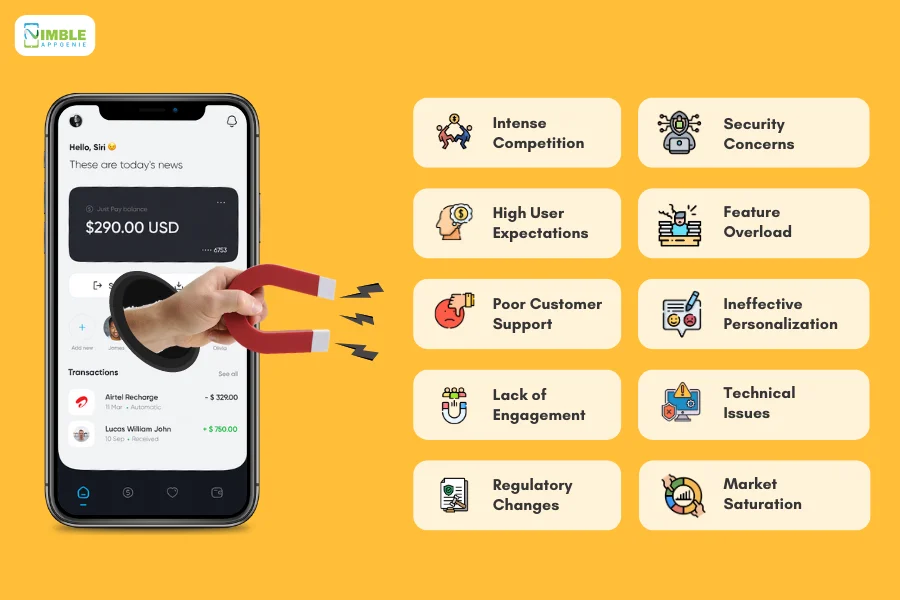
Here are ten common challenges payment service providers face:
Intense Competition
The fintech and payment services market is crowded, with numerous payment apps vying for user attention.
Differentiating your app in a sea of competitors can be daunting, making it harder to retain users who have a plethora of alternatives.
This is one of the most common challenges that leads to poor app user retention rates.
Security Concerns
With the rise of cyber threats, users are increasingly wary of data breaches.
Any perceived security flaw or actual breach can significantly erode trust and prompt users to abandon the app.
This is what makes payment app security so important.
High User Expectations
Today’s users expect seamless, intuitive experiences.
Even minor inconveniences or disruptions can lead to frustration and churn, as users have little tolerance for less-than-optimal functionality.
Feature Overload
When we are talking about payment or digital payment application, features takes an important stance.
While adding features can provide value, there’s a delicate balance to maintain. An overload of features can overwhelm users, making the app complex and difficult to navigate.
Poor Customer Support
Inadequate customer support can lead to unresolved issues and frustration, which are significant factors in a user’s decision to stop using a payment app.
This is one of the biggest areas that can decrease app user retention.
Ineffective Personalization
Personalization is a big payment app trend.
Failing to tailor the user experience to individual needs and preferences can lead to a sense of disconnection and irrelevance.
Thus, prompting users to look for alternatives that better meet their expectations.
Lack of Engagement
Wondering why user retention in payment apps is low? Well, one of the big reasons can be unexciting app design.
Without regular, meaningful engagement, users may forget about the app or fail to see its ongoing value, leading to decreased usage over time.
Technical Issues
Bugs, crashes, and slow performance can severely impact the user experience. Consistent technical problems are a quick way to drive users away.
At the end of the day, this leads to a bad user experience delivering something
Regulatory Changes
The payment industry is subject to strict regulations that can change. Adapting to these changes can be challenging, and failing to do so can lead to service interruptions or limitations, affecting user retention in payment apps.
Market Saturation
In many regions, the market for payment apps is reaching saturation, making it increasingly difficult to retain users who might be tempted to consolidate their financial activities into fewer apps.
Each of these challenges requires a strategic approach to mitigate its impact on user retention. By addressing these issues proactively and placing user experience at the forefront of their operations, payment service providers can enhance user retention and ensure sustained success in the competitive payment app market.
User Retention Strategies for Payment Apps
In today’s fiercely competitive fintech market, where payment apps vie for user attention, implementing robust user retention strategies is no longer a nicety – it’s an absolute necessity.
These strategies should be meticulously crafted to not only enhance the user experience but also foster a sense of loyalty and continually deliver value.
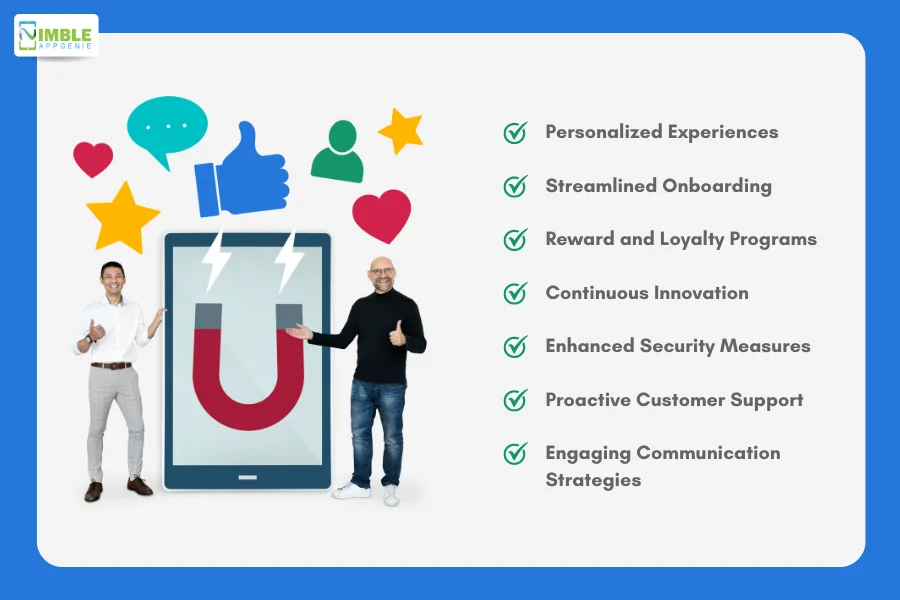
Let’s delve deeper into specific, data-driven approaches, illustrated with real-world examples, to illuminate their impact on user retention in payment apps.
1] Personalized Experiences
Personalization extends far beyond simply addressing users by name.
It’s about intimately understanding and anticipating their needs based on their behavior and preferences.
For instance, if a user frequently conducts international money transfers, the app could proactively offer them preferential exchange rates or reduced fees on these transactions, demonstrating appreciation for their loyalty.
This resonates strongly with consumers, as evidenced by an Epsilon study revealing that 80% are more likely to make a purchase when brands provide personalized experiences.
2] Streamlined Onboarding
The onboarding process acts as the initial point of contact, setting the tone for the user’s entire journey within the app.
A report by Appcues underscores the importance of a smooth onboarding experience, highlighting a potential increase in retention of up to 50% through improvements in this area.
A streamlined, user-friendly experience driven by Onboarding APIs can significantly reduce dropout rates.
Take Revolut, for example, whose rapid growth can be partly attributed to its simple, step-by-step onboarding process, which can be completed in less than ten minutes.
3] Reward and Loyalty Programs
Rewards and loyalty programs offer a compelling reason for users to keep coming back.
Strategically implemented cashback offers, referral bonuses, and points systems can effectively incentivize continued app usage.
PayPal exemplifies this concept with its referral rewards program, which not only fosters user retention but also fuels new user acquisition.
Research by Bond Brand Loyalty emphasizes the power of loyalty programs, indicating that 77% of consumers demonstrate loyalty to brands with top-tier programs.
Interestingly, a study by Bain & Company reveals that increasing customer retention by just 5% can lead to a profit increase of up to 95%, highlighting the significant financial impact of loyal users.
4] Continuous Innovation
Regularly updating the app with fresh and improved features, informed by user feedback and current market trends, is paramount for maintaining user interest and engagement.
Venmo exemplifies this principle with its consistent rollout of new features such as bill splitting, cryptocurrency purchases, and more, ensuring a constantly evolving and engaging user experience.
A Pendo study reinforces the value of frequent updates, demonstrating a 60% higher retention rate for apps that release updates more consistently.
Furthermore, according to App Annie, the leader in app market data, users are more likely to engage with apps that release frequent updates, highlighting the importance of keeping the app fresh and exciting.
5] Enhanced Security Measures
Given the sensitive nature of financial transactions, robust security measures are absolutely crucial.
Implementing biometric authentication methods, such as fingerprint or facial recognition, provides users with a heightened sense of security and peace of mind.
Transparency regarding data usage is also essential for building trust. A report by Experian highlights this point, revealing that 80% of consumers perceive a business as more trustworthy when it demonstrates transparency in how their information is used.
In fact, a PwC study found that 73% of consumers are more likely to do business with a company that prioritizes data security, underlining the importance of building trust through robust security practices.
6] Proactive Customer Support
Offering multiple customer support channels, including AI-powered chatbots for immediate assistance, ensures that users have access to help whenever they encounter an issue.
Timely and effective support can transform potentially negative experiences into positive ones, fostering user satisfaction and loyalty.
A Zendesk study underscores the value of exceptional customer service, demonstrating that 89% of consumers are more likely to make a repeat purchase after a positive customer service experience.
Moreover, according to American Express, 78% of consumers would be willing to pay more for a product or service from a company that offers excellent customer service, highlighting the financial benefits of prioritizing user satisfaction.
7] Engaging Communication Strategies
Lastly, we have one of the most important user retention strategy mobile app can employ.
Maintaining an open line of communication through personalized emails, targeted push notifications, and in-app messages allows you to keep users informed and engaged.
Sending notifications about new features that align with a user’s spending habits, for example, can be highly effective in driving adoption and engagement.
According to Leanplum, personalized push notifications can lead to an impressive increase of up to 800% in open rates.
Furthermore, research by Localytics reveals that users who receive relevant push notifications are more likely to convert and make in-app purchases, underlining
These are some of the key strategies that can help you increase mobile app retention. And with this out of the way, it’s time to look at some case studies.
Case Studies: How Popular Payment Apps Drive User Retention
The fintech landscape is abundant with innovative payment apps, each striving to carve out a niche in the competitive market.
Here, we delve into a few notable examples that have achieved remarkable success in user retention, exploring the strategies that set them apart.
► Venmo: Fostering Social Interactions
Let’s start with Venmo.
The popular peer-to-peer payment app has masterfully integrated social features into its platform, making financial transactions a shared experience among friends and family.
Users can add notes, emojis, and even likes to payments, transforming mundane transactions into engaging interactions.
Want to create an app like Venmo that attracts a lot of people? Here’s how they did it:
Tactics Employed:
- Social Feed: Venmo’s social feed, where users can see friends’ payment activities (with privacy controls), adds a layer of engagement that goes beyond mere transactions.
- Simplicity and Ease of Use: The app’s straightforward interface makes sending and requesting money seamless, encouraging frequent use.
- Personalization: Venmo personalizes user experiences by suggesting friends to pay based on past transactions, making the app more intuitive and connected.
► PayPal: Enhancing Security and Trust
PayPal, one of the pioneers in online payments, has built its reputation on providing secure and reliable services.
Its user retention is significantly driven by its emphasis on security and customer protection.
While the market is filled with apps like PayPal , here’s how you can stand out of them:
Tactics Employed:
- Buyer Protection: PayPal’s Buyer Protection policy reassures users that their transactions are secure, and they can get their money back if there’s an issue.
- Two-Factor Authentication: This adds an extra layer of security, making users feel safer when conducting transactions.
- Regular Updates: PayPal continuously updates its app to introduce new features and enhance security, keeping the user experience fresh and secure.
► Cash App: Simplifying User Experience
There are a lot of people are considering cash-clone app development.
Cash App by Square has made significant inroads into the payment app market by offering a minimalist and intuitive user interface that simplifies financial transactions, appealing to a broad user base.
Tactics Employed:
- Minimalist Design: The app’s design is straightforward, with clear, actionable steps for sending and receiving money, buying cryptocurrency, or investing in stocks.
- Instant Transfers: Users can instantly transfer money to their bank accounts, enhancing the app’s convenience.
- Cash Boosts: Cash App offers unique discounts at popular retailers and restaurants, directly applicable through the app’s debit card, adding value beyond basic transactions.
► Zelle: Leveraging Bank Partnerships
Zelle business model has been leaving founders in awe.
It differentiates itself by integrating directly with users’ existing bank accounts through partnerships with major banks, offering a seamless and secure way to send and receive money.
Tactics Employed:
- Integration with Banking Apps: Users can access Zelle directly from their bank’s app, leveraging existing trust and familiarity.
- Speed: Zelle transactions are typically completed within minutes, providing immediate gratification and utility.
- Ease of Use: With Zelle, there’s no need to set up a separate account or wallet, making the user experience frictionless.
Nimble AppGenie, Your Partner in Developing A Payment That Attract Users (& Retain Them)
As a leading payment app development company, Nimble AppGenie is your ideal partner for creating apps that don’t just draw users in but keep them engaged long-term.
- Pay By Check– Pay by Check is a popular ewallet mobile app in the United States of America. It allows users to transfer, pay, or even exchange currency.
- DafriBank– Digital Bank of Africa is a leading banking portal that also allows users to trade cryptocurrencies and provides e-wallet advantages.
- SatPay– An eWallet platform is a Versatile eWallet Solution that allows users to request, receive, and send payments without hassle.
- CUT– an E-wallet Mobile App, CUT is available in China and Myanmar. It works well with both RMB and MMK currencies.
- SatBorsa– a Currency Exchange Fintech app. SatBorsa is one of the platforms that is available on both platforms, iOS and Android.
With a portfolio of over 700 apps and an impressive 95% user retention rate, our expertise is recognized by industry giants like TopDevelopers, Clutch.co, and GoodFirms.
Trust us to elevate your payment app to new heights.
Conclusion
User retention in payment apps reveals a multifaceted challenge that demands a blend of innovation, user-centric design, and relentless pursuit of excellence.
As we’ve explored, the foundation of sustained user engagement lies in understanding the nuanced needs and behaviors of users, crafting a seamless and intuitive user experience, and continuously delivering value that resonates with users’ evolving expectations.
The pillars of user retention in payment apps—ranging from a frictionless onboarding process to personalized experiences, and from robust security measures to exceptional customer support—form the cornerstone of a strategy designed to not only attract but retain a loyal user base.
Overcoming common challenges such as intense competition, high user expectations, and the ever-resent threat of security breaches requires a proactive and adaptive approach
FAQs
User retention refers to the ability of payment apps to keep users engaged and active over a period of time. It involves ensuring users continue to use the app for transactions and explore its features, rather than abandoning it after a few uses.
User retention is crucial because it’s more cost-effective to retain an existing user than to acquire a new one. High retention rates also indicate a loyal user base, which can lead to increased transaction volumes and organic growth through word-of-mouth referrals.
Improving user retention involves several strategies, including offering a seamless onboarding experience, continuously delivering value through relevant features, personalizing the user experience, ensuring top-notch security, and providing excellent customer support.
Personalization enhances user retention by making users feel understood and valued. Tailored experiences, such as personalized offers or recommendations, can increase engagement and loyalty, making users more likely to continue using the app.
Exceptional customer support can significantly impact user retention. Quick and helpful responses to user inquiries or issues can turn potentially negative experiences into positive ones, fostering loyalty and encouraging continued app usage.
A/B testing allows payment apps to experiment with different features, designs, or functionalities to see which ones resonate most with users. This data-driven approach helps optimize the user experience, leading to higher engagement and retention.
Yes, creating a sense of community can enhance user loyalty and retention. Features that promote social interactions or collective challenges can foster a sense of belonging and keep users engaged with the app.
Tracking user behavior and app analytics provides insights into how users interact with the app, which features they prefer, and where they may encounter issues. This information is vital for making informed decisions to improve the user experience and retention.
Security is paramount in payment apps. Users need to trust that their financial information and transactions are safe. Any breach or perceived security flaw can lead to a loss of trust and a decrease in user retention.
Payment apps can stay competitive by continuously innovating, adapting to user feedback, embracing new technologies, and ensuring they offer unique value that addresses users’ needs and preferences. Keeping the user experience at the forefront of development efforts is key to maintaining high retention rates.

Niketan Sharma is the CTO of Nimble AppGenie, a prominent website and mobile app development company in the USA that is delivering excellence with a commitment to boosting business growth & maximizing customer satisfaction. He is a highly motivated individual who helps SMEs and startups grow in this dynamic market with the latest technology and innovation.
Table of Contents




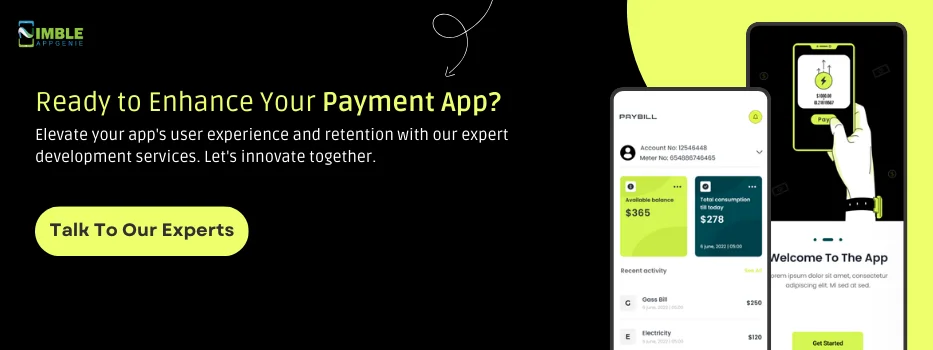
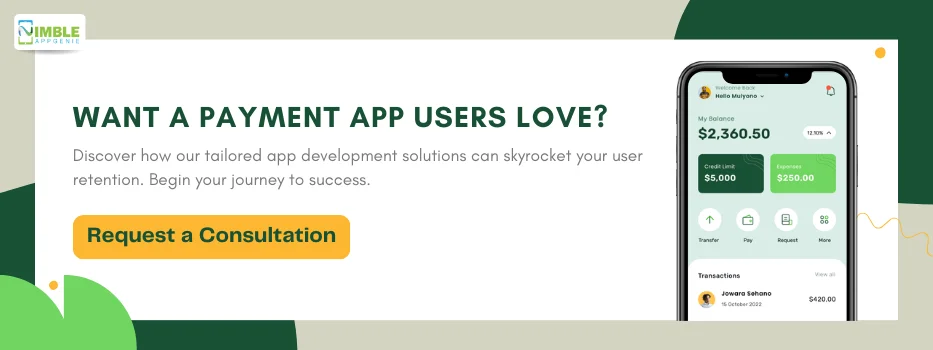
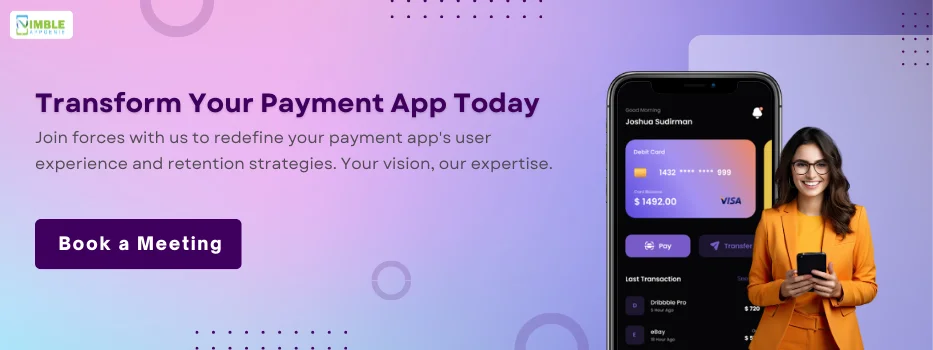








No Comments
Comments are closed.